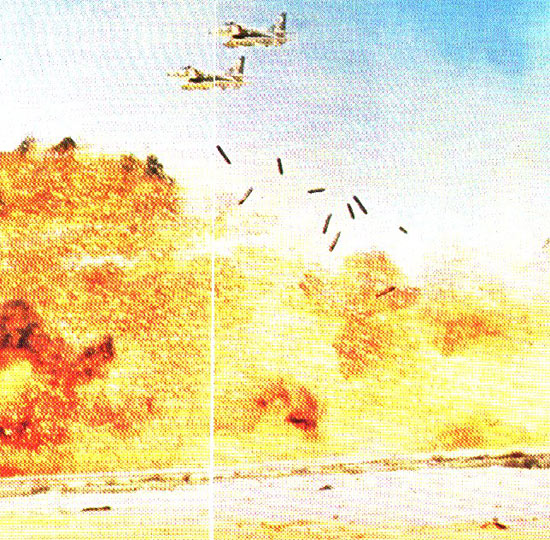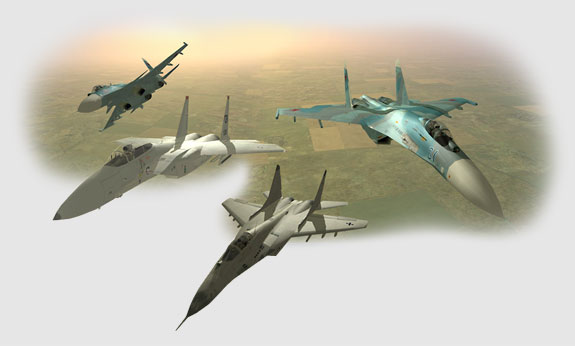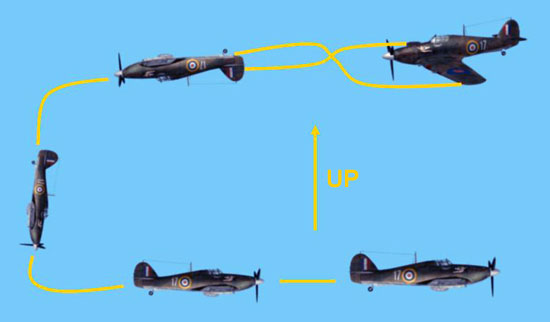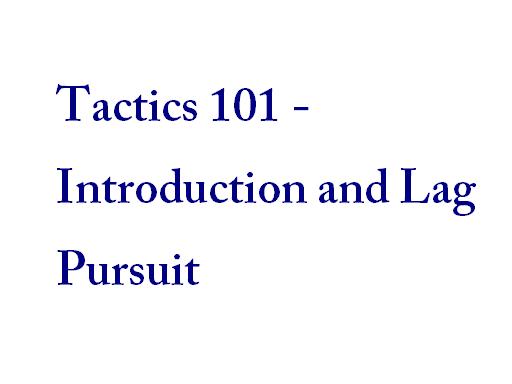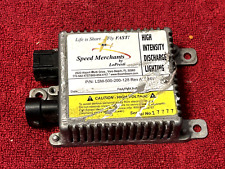by Dan “Crash” Crenshaw
 This article was inspired by “Blackout Modeling in Sim Design” by Jeff “Smoke” Faehn, originally posted on Falcon Headquarters.
This article was inspired by “Blackout Modeling in Sim Design” by Jeff “Smoke” Faehn, originally posted on Falcon Headquarters.
“At nine [positive] G’s, you can’t move a muscle. It pins your hands and arms down, and your head weighs 100-plus pounds,” says Major Matt Modleski, an F-16 pilot with 174th Fighter Wing in Syracuse, N.Y. and former lead solo pilot for the Thunderbirds aerial demonstration squadron.
G-LOC, pronounced ‘Gee-Lock’, is an abbreviated term meaning G-Induced Loss of Consciousness. Not many simulations have been able to model this phenomenon effectively. Most people refer to it as “blackout,” including the simulation companies. Because of the incorrect use of terminology, many believe that when you pull high G’s, the only symptom you get is the tunnel vision and eventual blackout / simulated loss of consciousness. There is nothing further from the truth.

What does a pilot have to worry about during a high G maneuver?
First off, there is the amount of concentration involved in preparation of and then the actual “grunting” done while in the maneuver. No game has been able to model this. As you sit in your comfy chair, you have none of these factors to deal with. Already you are at an advantage. Buzz Hoffman, formally of Thrustmaster, once told me of an idea he was sent that was a “neck collar” that would tighten as you pulled G’s in a flight simulator. Understandably, the lawyers didn’t much like this idea.
Second, there is shear physical pain involved in pulling high G’s. Dale Varner, FLIGHTDOC of the 303rd Sidewinders, is also a real flight surgeon in the Air National Guard. FLIGHTDOC regularly has to go on flights with pilots to evaluate them and their condition. He explained to me that the pain during a high G maneuver is excruciating. Anyone that has ever experienced any type of pain knows that it is extremely difficult to think of anything else while in severe pain. Training can overcome some of this, but nowhere near all of it. Concentration is difficult to maintain while in pain. So again, as you sit in your comfy chair, sipping on a soda, you are at a serious advantage.
Third, Situational Awareness is severely hampered. As in the opening quote from Maj. Modleski, you are not going to be looking around much. In every game to date, this is not modeled. During a test session with Microprose over a year ago, I had asked if the amount of slew / head movement could be reduced in an increasing proportion based on the amount and length of G’s being pulled. No game to date has modeled this at all. I have heard jokes from real pilots about the new guys that come out of a training exercise with their necks twisted in pain. They tried to look around in a high G turn. Of course, there are ways to help overcome some of this, but the effort and gyrations you must go through makes it a difficult task. So once again, you, your chair, your soda, and Van Halen CD playing are at an advantage.
I also need to point out that there is a distinct difference between grey / blackout and G-LOC. A fellow flight sim fanatic, Mark “BOXER” Doran, has experienced a 5.5+ G pull out during a session at SKY WARRIORS. He had this to say about it:
“From my 5.5G only experience, I greyed, felt like I was getting a headache and started to lose field of view (in that order) through what must have been only a few seconds of pulling out at the bottom of a dive. This isn’t G-LOC since I didn’t actually go night-night but it sure as heck degraded my control of the plane!! Yep, I didn’t prepare for that pull out at all and I paid the price…”
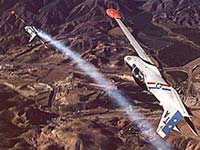
BOXER is not in fighter pilot shape, but he is not in bad shape either. Obviously a trained and physically prepared pilot will not feel these effects at 5.5+ G’s, but these are the same symptomsone would experience at higher G’s. So it is obvious that blackout is not the first symptom you will feel. Game blackout sequences are trying to encompass all of these types of issues, thus they must make tradeoffs.
To have a pilot state that they can “pull high G’s as long as they need to” is understating the importance of proper preparation and physical fitness. It sounds more to me like a group of pilots trying to “one up” each other (a frequent occurrence in activities that are associated with “machismo”). These comments completely discount and downplay the difficulty that fighter pilots must overcome every day. It just is not as easy as they were making it sound. If this were indeed the case, why would there be a need for G-suits or “speed jeans?” The other question is just exactly how long is “as long as I need to?” In a true life or death situation, the human body is capable of amazing feats, but rarely has anyone in a situation like this ever been hooked up to the proper equipment to get an accurate idea of just what really can be done.
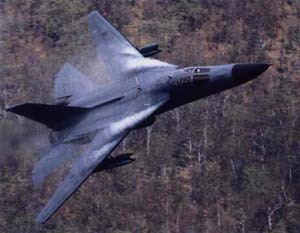
Some may argue that it is a well-known fact that the Blue Angels do not wear G-suits. A short analysis will show that the Blue Angels pull sustained G’s in a controlled, gradual onset (gradual may be quick, or slow, but a build up, as opposed to a sudden jerk to 9 G’s) environment. They also do not make many high G maneuvers without periods of rest. Ever wonder what Angels 5 and 6 are doing while 1, 2, 3, and 4 are showing off? Or vice versa? The shows are designed to allow the pilots to perform high G maneuvers without risk to the pilots or audience. Do not take this as an insult to the Blue Angels or their abilities. On the contrary, I regard them as some of the finest pilots in the world, even more so for their understanding and recognition of their own physical limitations. Their reasons for not wearing G-suits are based on precision control, not on physical reasons. They brace their arms on their legs to help maintain precise movements of the stick. The pumping up and down of the G-suit would cause their arm to move which in turn would cause movement in the stick. The Thunderbirds, on the other hand, do not have to worry about this since their sticks are on the side (F/A-18 vs. F-16).
Next, folks will quote the myth that the Russians do not wear G suits either. These guys are also known to drink hydraulic fluid when they are out of vodka. Does that mean it is right? But seriously, Russians DO have G-suits. Pretty darn good ones, too. While it is my understanding these are optional at the pilot’s discretion, most do wear them.
The G-LOC fatigue factor is such an important and integral part of combat flying that development of the Combined Advanced Technology Enhanced Design G-Ensemble (COMBAT EDGE) is in progress. While a normal G-suit provides passive protection to about 5.5+ G’s, anything beyond that requires active participation from the pilot. Even up to 5.5+ G’s, pilots are using their “grunting,” CTFB (“crap the football”), or L1/M1 (anti-G straining) maneuver. The COMBAT EDGE will enhance the pilot’s ability to tolerate sustained G’s as well as assist in proper breathing rhythms for maximum tolerance.
There is also the “HOOK” maneuver that the Navy is researching. The word “HOOK” is used as a mnemonic aid to help the trainee accomplish the anti-G strain properly. Vocalizing “HOOK” causes voluntarily closing of the glottis (the vocal apparatus of the larynx, consisting of the true vocal cords and the opening between them), which is an important part of effective anti-G straining. U.S. Navy experience shows that this method is more effective than the “grunt” and L-1/M-1 techniques used before. If fighter pilots could already “pull high G’s as long as they need to,” none of these improvements or this research would be necessary.
An ex-Marine friend and I were talking about the 60 second 9 G record that SMOKE referred to in his article at F4HQ.com. My friend’s comment was “blackout is induced by lack of oxygen to the brain, and Marines have little need for oxygen in their heads. That story doesn’t surprise me.” I need to note we had a few beers while talking about it and he laughed the whole statement. But on the serious side, pulling 9 G’s in a simulator with no need to control an aircraft or deal with combat issues is entirely different than pulling 9 G’s while trying to maintain control of an aircraft, look for bandits, etc. Liken it to records of breath holding. The guys that did it for 13+ minutes were lying perfectly still and not doing anything BUT holding their breath and concentrating on holding their breath. Try to perform any other activity while holding your breath and the time you can do it drops in something more than geometric. A static centrifuge test is not an accurate assessment of how long high G’s can be tolerated in a real world situation.

In addition, most modern centrifuge seating is adjustable. No one mentioned the angle the Marine was seated at. It has been proven in a centrifuge that an 80 degree recline can allow sustained G tolerance of up to 15 G’s. It would be a bit difficult to actually see out of an aircraft at this angle. The F-16’s 30 degree recline or SU-25M’s 35 degree recline is about as far as is practical at this point. These angles allow an increase in G tolerance of about 1 additional G.
I do agree with SMOKE that the narrowing of vision does not simulate what a pilot actually experiences in a G-LOC situation. It is only a small portion of what would really be experienced. You don’t have the limitations of view and difficulty incurred to normal, easy, and natural functions like grabbing the joystick. You also do not have to deal with the pain and debilitating effects it has on your concentration. However, turning off the blackout turns you into a super human fighter pilot more on par with Luke Skywalker rather than Pete Bonanni or Duke Cunningham. If you look at the onset of blackout as the effects of pain, simulation of lack of concentration, lack of situational awareness, etc., it does a decent job of getting you to stop pulling the infinite G dogfight.
Turning off blackout also puts you at an advantage when the AI in current sims is G-LOC limited. Suddenly, you can fly with no consideration of human limitations while the computer pilots are programmed with that limitation. This is opposite of the way is was a few years back. There are trade offs in any sim between reality and game play. The current blackout in Falcon 4, which averages about 26 seconds to total blackout on all four of my test machines, is easily livable and believable if you consider that it is not just blacking out, but losing control and function of your abilities, inhibiting your concentration, etc. Several medical studies by the Air Force have pegged G-LOC, actual loss of function, in the area of 22 to 26 seconds on average. There is not too much difference between scientific studies and the game.
Also, I have never lost a dogfight to human or AI due to blackout limitations, but from my own mistakes. Falcon 4 is also modeling the fatigue factor. The more high G maneuvers you make in a row, the sooner G-LOC will set in. If you take a rest between maneuvers, this simulates your body recovering. Turning blackout on may not be completely realistic, but it is much more so than leaving it off. The lesser of two evils, so to speak.

It is well known that I travel in the more hard-core flight sim circles. None of my associates, from the 209th VFS Delta Hawks LAN squadron to people around the world known via the Internet, would consider turning off blackout realistic. All are reasonably content with Falcon 4‘s trade offs in their modeling of this phenomenon. NONE of them consider it a totally accurate depiction of the actual effects of G-LOC, but feel it does an adequate job of forcing the virtual pilot to contend with multiple issues. It forces the virtual pilot to back off on the high G maneuvers, the ultimate end result of the “Blackout / G-LOC” equation. It also adds another realism factor of what every real fighter pilot has to face, task saturation, management of multiple tasks, and concerns while in a life or death situation.
So regardless of the simulation you are flying, if you want to fly like the pros, and not like a Jedi Knight, turn the blackout on.


